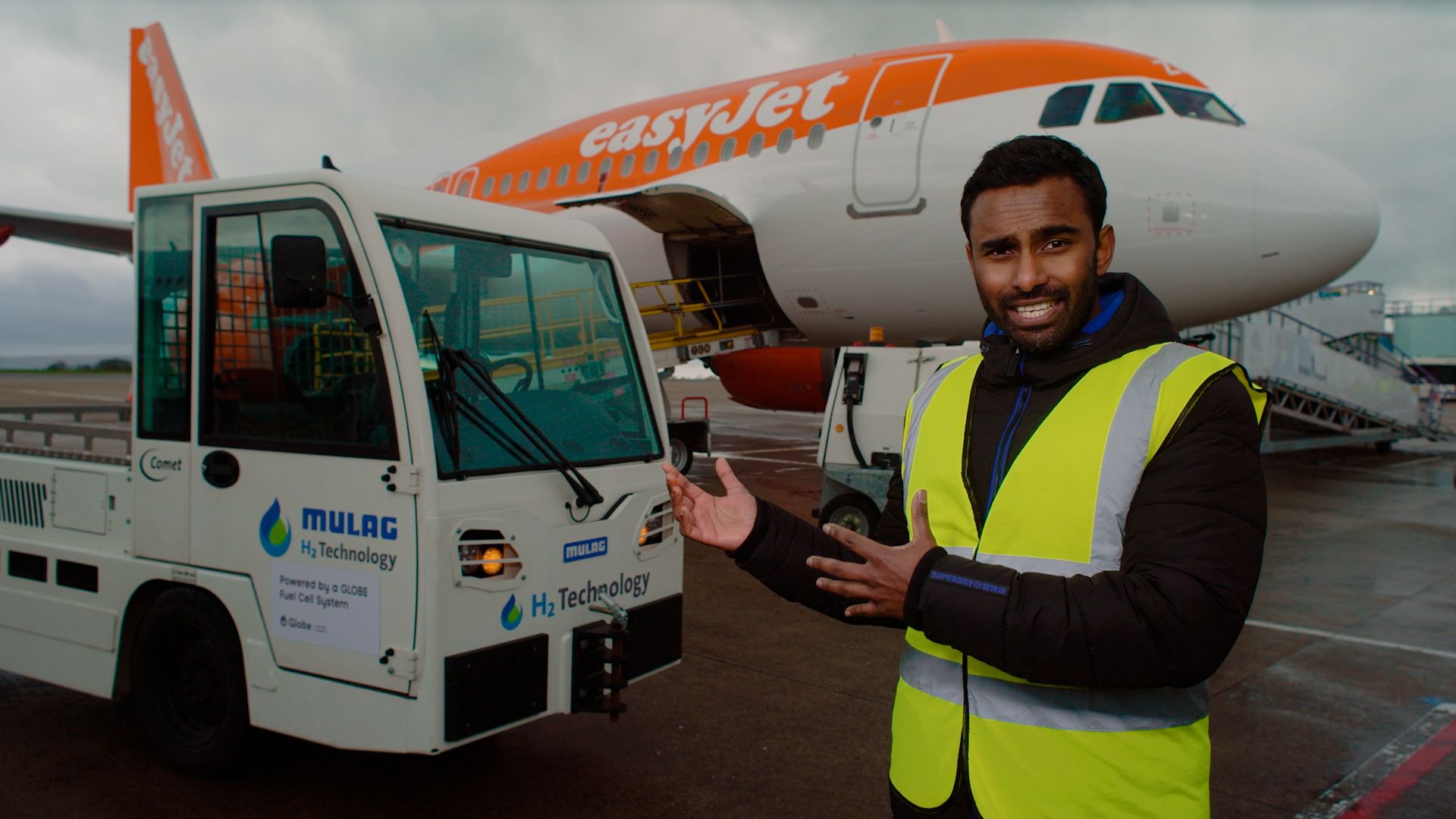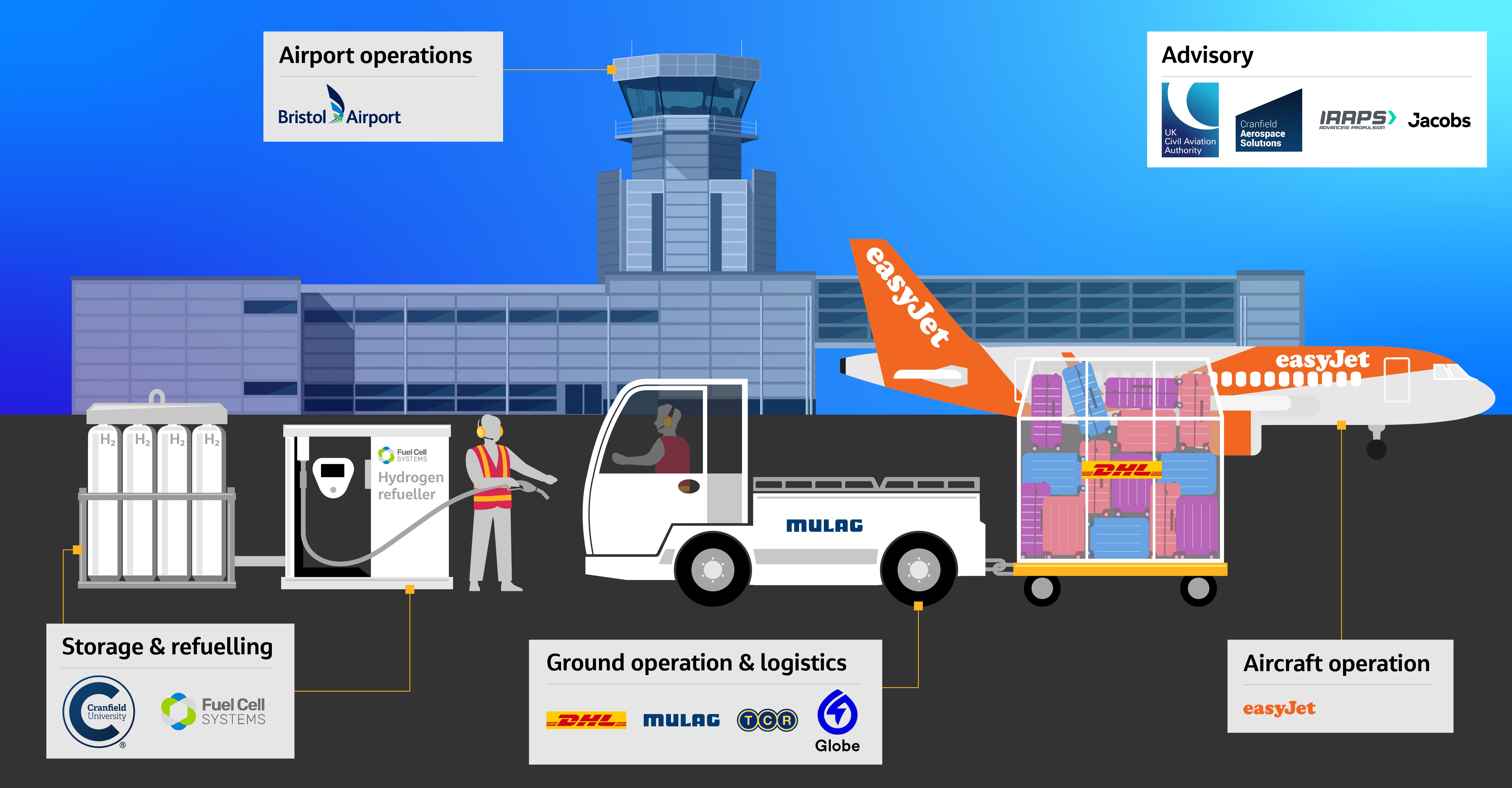Summary
- Neat sustainable aviation fuel is certified, but hydrogen power still developing and needs infrastructure.
- Project Acorn trial successful, proving hydrogen use for ground equipment at live airports.
- Safety case for hydrogen in aviation is being built, with challenges still needing to be addressed.
Most of the world’s airlines and airports have taken up the challenge of reaching net zero carbon emissions, but the responsibility to make that happen is spread far more widely than those two groups. Decarbonizing will require the cooperation of industry partners of all shapes and sizes, particularly regarding the infrastructure needed to keep new-technology aircraft in the air.
A stepping stone for hydrogen fuel
The industry is rapidly reaching the stage where neat sustainable aviation fuel (SAF) is certified for engines and aircraft operations, and the technology has already been proven in commercial flights. Powering aircraft with hydrogen is not there yet but is also rapidly developing, although both fuel sources require significant infrastructure before being widely adopted.
Photo: easyJet
On Friday, leading low-cost carrier easyJet announced the completion of an airside hydrogen refueling trial at Bristol Airport (BRS) in the United Kingdom. Led by easyJet, the trial involved a raft of industry partners who came together to refuel and power ground support equipment (GSE), in this case a baggage tractor, servicing easyJet passenger aircraft.
The trial, dubbed Project Acorn, was conducted as part of easyJet’s daily operations at Bristol Airport, and its success has proven that hydrogen can be safely and reliably used to refuel ground equipment in a busy, live airport environment. Chief Operating Officer at easyJet, David Morgan, said it is without doubt that hydrogen will be an important fuel of the future for short-haul aviation, as demonstrated by the rate of innovation the airline is seeing.
“While the technology is advancing at an exciting pace, as hydrogen isn’t used in commercial aviation today, there is currently no regulatory guidance in place on how it can and should be used, and so trials like this are very important in building the safety case and providing critical data and insight to inform the development of the industry’s regulatory framework.”
Photo: Rebius | Shutterstock
Time is running short for aviation to develop the ground infrastructure, operational procedures and safety standards, including how to use, control and transport hydrogen, to make the sector operationally ready for the new fuel. Project Acorn is the first step on this journey, and the GSE trials accomplished a key objective of receiving clearance for airside refueling from the Civil Aviation Authority.
A shorter-term aim is to lead to the long-term or permanent deployment of hydrogen GSE at Bristol Airport and readying the airport for trials and then commercial operations of hydrogen-fueled aircraft. More broadly, the safety assessments and emergency planning with local authorities will provide invaluable learnings and serve as a blueprint to assist airports transitioning to hydrogen.
Building the safety case for hydrogen
Project Acorn has been in development for over a year and the UK Civil Aviation Authority (CAA) has played an active role as an independent reviewer of the safety case. It must be remembered that while hydrogen is a potential zero-emissions aviation fuel source, many regulatory, safety and certification challenges need to be overcome.
Image: easyJet
To continue developing hydrogen in aviation, more research and testing are required to inform hydrogen infrastructure policy and ensure safe handling in airport and airline operations, which will support future hydrogen adoption. The operational trial of gaseous hydrogen-fueled GSE in an airport is one such opportunity, which is why this successful outcome is an important stepping stone for hydrogen power in aviation. The key stages of the trial included:
- Safety & Evaluation: Landside operational trials and training were conducted in a safe and controlled environment at Cranfield University prior to the test at Bristol Airport.
- Storage & Distribution: Tanks containing hydrogen and a hyQube hydrogen refueler, designed and provided by Fuel Cell Systems, were transported to the trial site at the airport. The baggage tractor’s full tank takes around three minutes to fill up, which is enough to keep it running for 2-3 hours.
- Powering the tractor: Logistics company DHL refueled the tractor from a mobile refueler and serviced easyJet aircraft, towing passenger luggage from easyJet passenger aircraft to and from the plane and airport as part of normal operations.
The UK Department for Transport’s Jet Zero Strategy projects that rapid investment in hydrogen aviation could see the UK secure up to 19% of the global aerospace industry and share of a benefit valued at £178 billion ($221b) per annum in 2050, which means this could generate an additional £34 billion ($42b) per annum.
Is this a positive step for hydrogen in aviation? Let us know in the comments.






